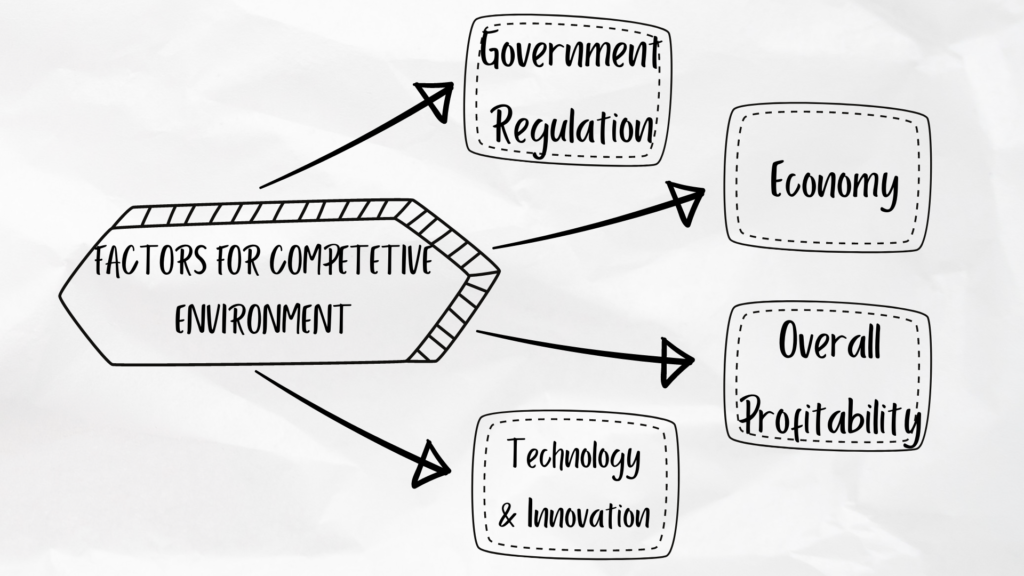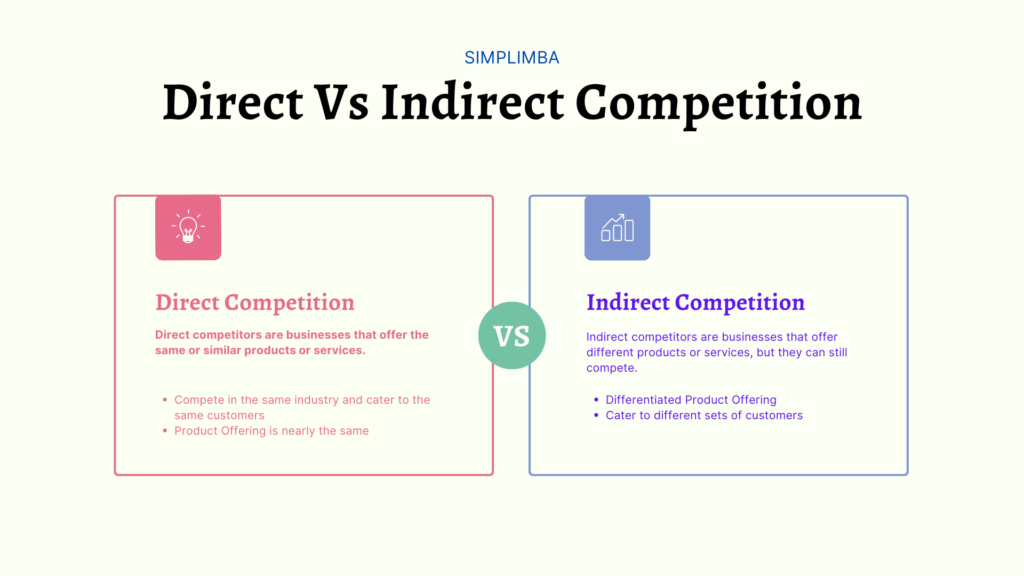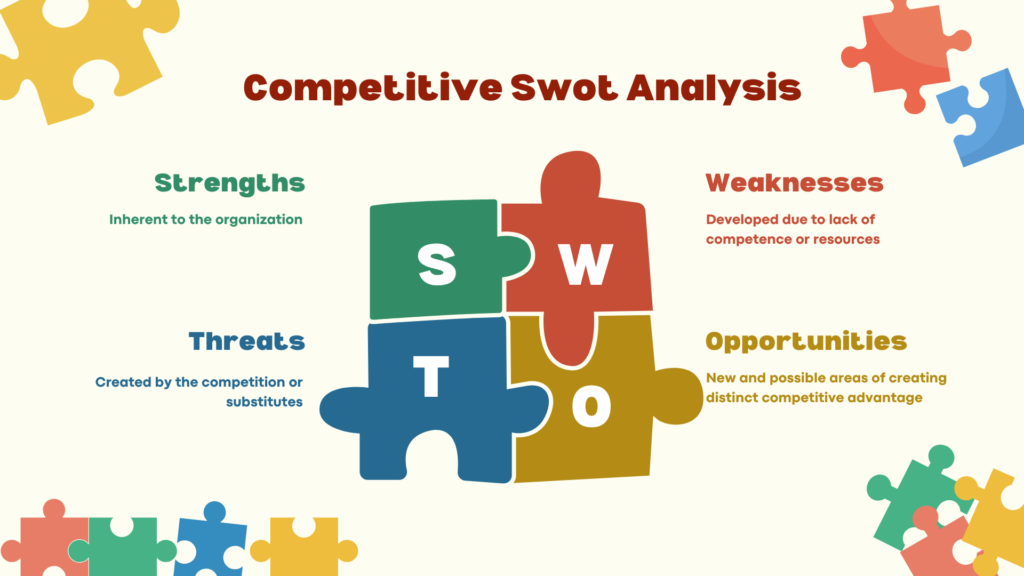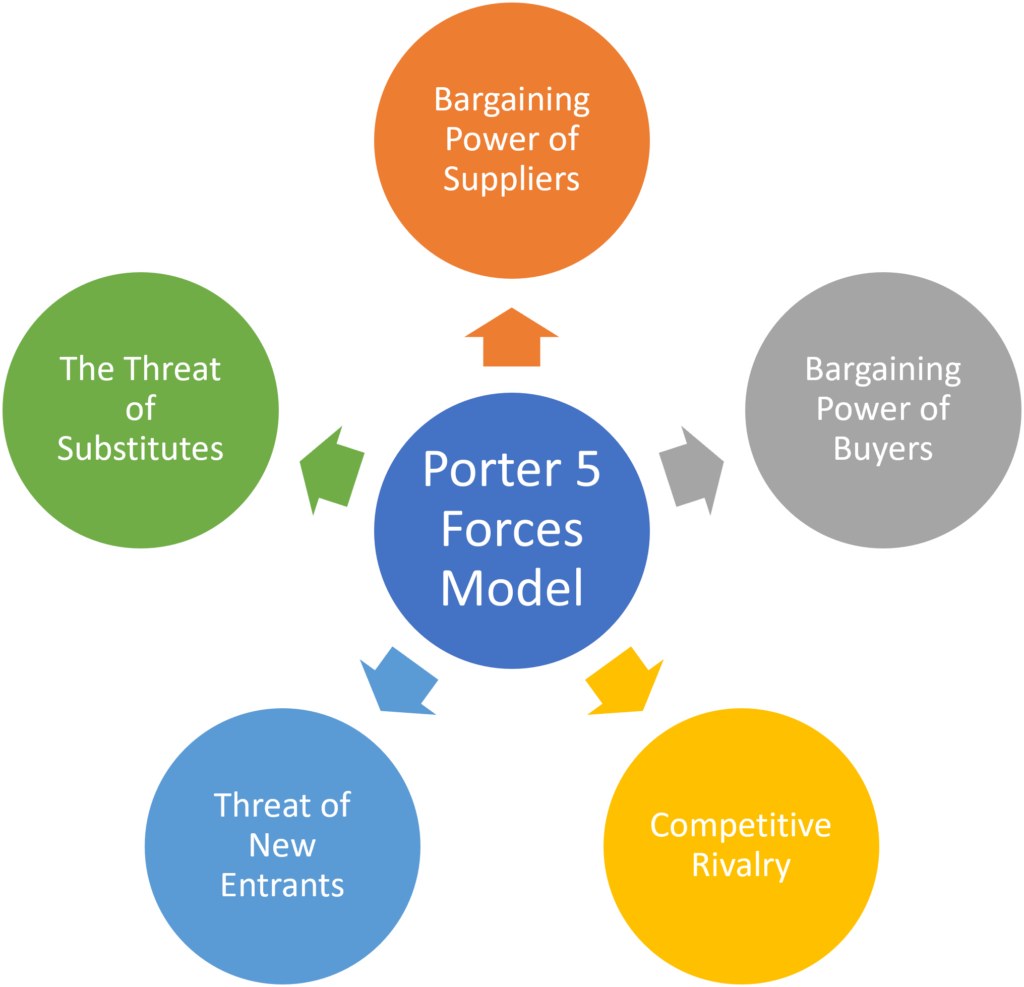Definition of Competitive Environment
Competitive Environment analysis is one of the most important aspects of a strategic management course. Understanding what we mean when we talk about the competitive environment is crucial to comprehending the effects rivalry and competition have on firms.
- A system where numerous firms compete with one another utilizing diverse marketing channels, advertising techniques, pricing approaches, etc. is referred to as a competitive environment. Businesses should abide by the rules included in this system.
- Different companies compete against one another inside a predetermined market. It has to do with how a business responds to competition and changes its methods to remain competitive.
Before we analyze a competitive environment we must understand what competition actually means.
Competition refers to a situation in a market in which firms or sellers independently strive for the patronage of buyers in order to achieve a particular business objective, e.g., profits, sales and/or market share.
OECD
A Competitive environment may thus be defined as a set of factors that govern the competition in a market. It may be composed of various factors like regulations in the market, the purchasing power of the buyers, the nature of the product, or simply the technology which governs the production or service.
Factors that govern a competitive environment
The various factors which govern the competitive environment may not only be limited to the players or the competition in the market. There can be many other factors that make the environment remain competitive. Let’s discuss a few

Government Regulation: Government regulations and intervention generally define the competitive environment. Government introduces new laws and legislations regarding products or markets which directly impacts the environment they operate in.
Overall Profitability of the Industry: If the industry is highly profitable and its goods and demands are in demand by the consumer, it will necessarily have high competition. It helps in creating differentiated product offerings and innovation
Type of Competition: The types of competitive environment generally outlays the environment they operate in. In a perfect competition where a player has significant resources in terms of finances and manpower, it will necessarily dominate the other factors including the competition
Technology and Innovation: The competitive environment that requires innovation and rapid usage of technology create the entry of disruptors. These disruptors can change the color of the environment by creating very innovative and new product offerings and can displace the existing incumbent
Demographics and the consumers: The consumers play a significant role in defining the competitive environment. The demographics also play a major role. A demographic with lower age will have tech-savvy products whereas an environment with a relatively higher age will have products that are trustworthy and will focus on significant brand building
External Forces like Culture: Culture, including society, lifestyles, and attitudes, changes constantly. Analyzing the culture’s direction helps you determine if your products or services meet societal trends and concerns. Understanding the prevalent or emerging culture can help you adjust your marketing or offering. In 1863, as more Swiss women entered the workforce, the need for a quick-to-prepare, nutritious product led to the creation of Maggi instant noodles. The recent investment surge in solar energy and electric cars is due to consumers’ preference for eco-friendly products and increased awareness of global warming. Social trends affect your product or service as much as other factors that affect your business.
Economy: The overall economy of a market defines the competition in an industry. In times of growth, the fight becomes intense for the airline industry as they scamper to gain maximum market share for people who are traveling. Conversely, in a recession economy, the competition becomes Ed-tech, and the Skill enhancement service industry becomes fierce.
Constituents of competitive environment
The competitive environment has different factors, including the two types of competitors that a business may face.

Direct competitors
Direct competitors are businesses that offer the same or similar products or services.
Example: Ryanair is a direct competitor with Wizz Air because they offer the same service which is low-fare flights.
Effect of Direct Competitors
The competitive environment is crowded with direct rivals in a strong market economy. These encompass everyone working for the same company. All companies that provide the same goods and services within a sector are in direct rivalry with one another. Anyone who sells electronics, for instance, competes directly with other electronics vendors. The media consultancy businesses directly compete with one another.
Indirect competitors
Indirect competitors are businesses that offer different products or services, but they can still compete.
Example: Firms producing cameras and smartphones. Even though they offer different products, they compete with each other because consumers often substitute cameras for smartphones.
Effect of Indirect Competitors
Even if they don’t operate in the same industry as one another, indirect rivals nevertheless vie for the same customer spending. Though it’s not necessary, they may work in the same sector. The fact that each company provides a distinct product or service is what produces the indirect competitive environment.
For instance, in the entertainment sector, ticket brokers for sporting events or concerts compete with cable television channels for viewers’ attention. Indirect rivalry exists between a quick food establishment and a buffet restaurant.
Why Does the Environment Matter?
Understanding the environment that surrounds an organization is important to the executives in charge of the organization. There are several reasons for this. First, the environment provides resources that an organization needs in order to create goods and services. In the seventeenth century, British poet John Donne famously noted that “no man is an island.” Similarly, it is accurate to say that no organization is self-sufficient. As the human body must consume oxygen, food, and water, an organization needs to take in resources such as labor, money, and raw materials from outside its boundaries.
Second, the environment is a source of opportunities and threats for an organization. Opportunities are events and trends that create chances to improve an organization’s performance level. In the late 1990s, for example, the trends toward obesity in the US and the need for healthy eating helped Panera Bread position itself as a healthy alternative to traditional fast-food restaurants. Threats are events and trends that may undermine an organization’s performance.
Executives also must realize that virtually any environmental trend or event is likely to create opportunities for some organizations and threats for others. This is true even in extreme cases. In addition to horrible human death and suffering, the March 2011 earthquake and tsunami in Japan devastated many organizations, ranging from small businesses that were simply wiped out to corporate giants such as Toyota, whose manufacturing capabilities were undermined. As odd as it may seem, however, these tragic events also opened up significant opportunities for other organizations. The rebuilding of infrastructure and dwellings requires concrete, steel, and other materials. Japanese concrete manufacturers, steelmakers, and construction companies benefited in the wake of this tragedy.
Third, the environment shapes the various strategic decisions that executives make as they attempt to lead their organizations to success. The environment often places important constraints on an organization’s goals, for example. A firm that sets a goal of increasing annual sales by 50% might struggle to achieve this goal during an economic recession or if several new competitors enter its market. Environmental conditions also need to be taken into account when examining whether to start doing business in a new country, acquire another the company, or launch an innovative product, to name just a few.
How does a competitive environment affect businesses?
Your business and your actions may be directly impacted by your rivals. Consider two rival online clothes retailers who compete with one another for customers and financial gain. One of them chooses to offer 40% off the whole website during a flash sale right before Christmas. The competing business will also need to develop a compelling offer to draw leads and consumers, boost sales, move off-brand merchandise, and ultimately increase profits.
Similar to this, if a coffee firm releases a new product, its rival will need to think about growth hacking. Therefore, competition may be advantageous since it spurs businesses to improve themselves and their goods.
Customers benefit from a competitive atmosphere as well. Businesses frequently provide premium products at competitive prices to attract customers. Additionally, corporations must innovate to release their products. However, competition can occasionally make it more difficult for a firm to survive. Consider two businesses that are housed in the same place. It will be challenging for the second firm to compete if one of them sets cheap pricing and discounts.
It’s time to move on to the many sorts of competition that define the relationships between and among sellers and consumers now that you understand how a competitive environment affects your business and customers.
Types of Competitive Environment
To evaluate the business environment’s economic climate, it is crucial to comprehend the different competitive situations. To be able to understand industry and market news, policy shifts, and legislation in the future, you need to be familiar with how businesses and markets operate. Let’s identify the primary categories of competitive situations and examine each one in further detail.
Pure competition: In an environment where competition is fierce, several small businesses manufacture comparable goods that are in high demand. Due to their modest size, these producers have little ability to change the price, which is determined by the supply and demand for the product. For instance, when a farmer takes dairy goods to the neighborhood market, he or she cannot alter the going price and must accept it.
Monopolistic competition: In this setting, multiple producers create various goods that may or may not have the same function. Because of the variations in quality, features, and other factors, customers can discern between the items. Businesses actively utilize advertising to market their goods and persuade customers that they are superior to competing goods. Companies engaged in monopolistic competition have the power to set prices for their products because they are price makers. However, to distinguish themselves from other firms and justify the price rise of their items, they need to do something unique, such as raising the caliber of their goods.
Oligopoly: There are often two or more small enterprises in this market model. Companies cooperate rather than compete to gain high market returns, hence it is seen as steady. Prices are jointly established and maintained high by businesses or under the direction of a single business. Profit margins are larger under an oligopoly than they are in a more competitive setting. The primary issue with this market structure is that firms frequently experience the prisoner’s dilemma, which provides an incentive to deceive and behave in their own best interests at the expense of other enterprises.
Tools For Competitive Environment Analysis
Understanding your rivals’ strategies will help you create a winning marketing plan. To reach your company rivals at this stage, you require a competitive analysis framework. Let’s talk about a few of the most common frameworks.
SWOT Analysis: You may evaluate the internal and external elements affecting your business. With the use of this framework, you may pinpoint competitive advantages, assess your competitors’ strengths and weaknesses across various marketing channels, and choose your next marketing moves.

Strategic Group Analysis: Strategic Group Analysis: Using a variety of strategic aspects, this framework describes the strategies of all potent rivals. It enables you to determine the positions of your rivals in the market and the elements that make your company profitable. Additionally, it helps you to measure your position among rivals and pinpoint the essential elements of success.
Porter’s Five Forces:
This framework’s foundation is based on an examination of the industry’s competitive market dynamics and a contribution to the identification of the sector’s advantages and disadvantages. It has five components: substitutes, new competitors, buyers, suppliers, and suppliers. These five factors affect how fierce the rivalry is in your sector. We have published a detailed blog here

Growth-Share Matrix: Using this framework, you may choose whether goods are worthwhile investments based on their market attractiveness and competitiveness. Large businesses find it particularly helpful since it enables them to define their product portfolios and determine which goods are still worthwhile to invest in and which are no longer.
Perceptual Mapping: Using this framework, you may compare your product to those offered by your rivals. You may use it to determine whether your positioning strategy is appropriate for your target market and how buyers view your product in comparison to that of your rivals. It can also assist you in identifying the holes you need to fill. To fully understand different market structures, let’s walk you through some examples.
Examples of Competitive Environment
- Even tiny businesses include a component of competitive environment analysis in their business plans. It comprises all the outside circumstances that have an impact on your business and the goods or services you provide, as you are already aware of from the information above.
- Take electronics as an illustration. The South Korean corporation Samsung, which specializes in electrical and smart appliance technologies, was created. Apple, Sony, Huawei, Intel, and many other companies are among their rivals, therefore Samsung’s team works to provide a product that is superior to alternatives employing innovations that might draw customers.
- The sorts of competitive settings might change as a result of advancements in technology or changes in consumer purchasing patterns. As an illustration, Amazon altered product distribution and client expectations. Breakthroughs increased the number of consumer goods businesses and provided new markets for startups that previously had no chance to compete with more established businesses.
- Your company could be exposed to several competitive settings. Because of this, it’s essential to recognize how they differ and to be prepared to evaluate news about the market, the business, and government regulations.
Samrat is a Delhi-based MBA from the Indian Institute of Management. He is a Strategy, AI, and Marketing Enthusiast and passionately writes about core and emerging topics in Management studies. Reach out to his LinkedIn for a discussion or follow his Quora Page
